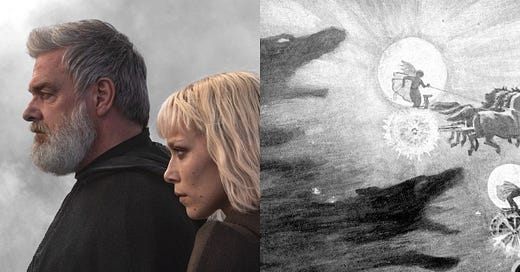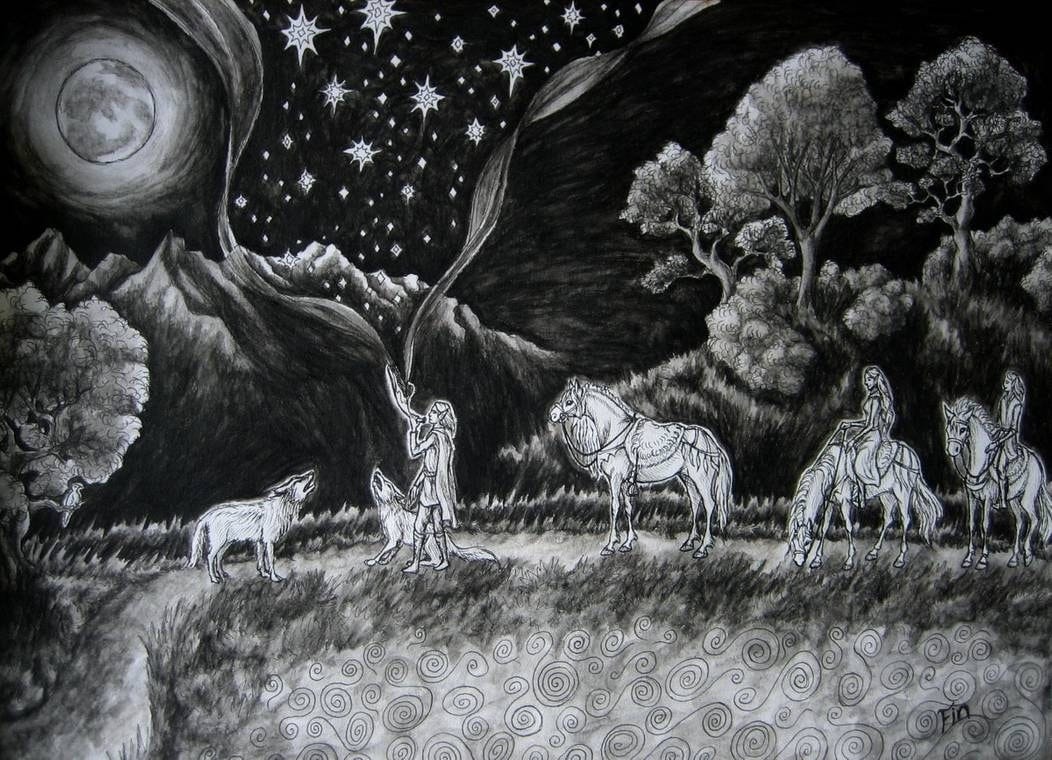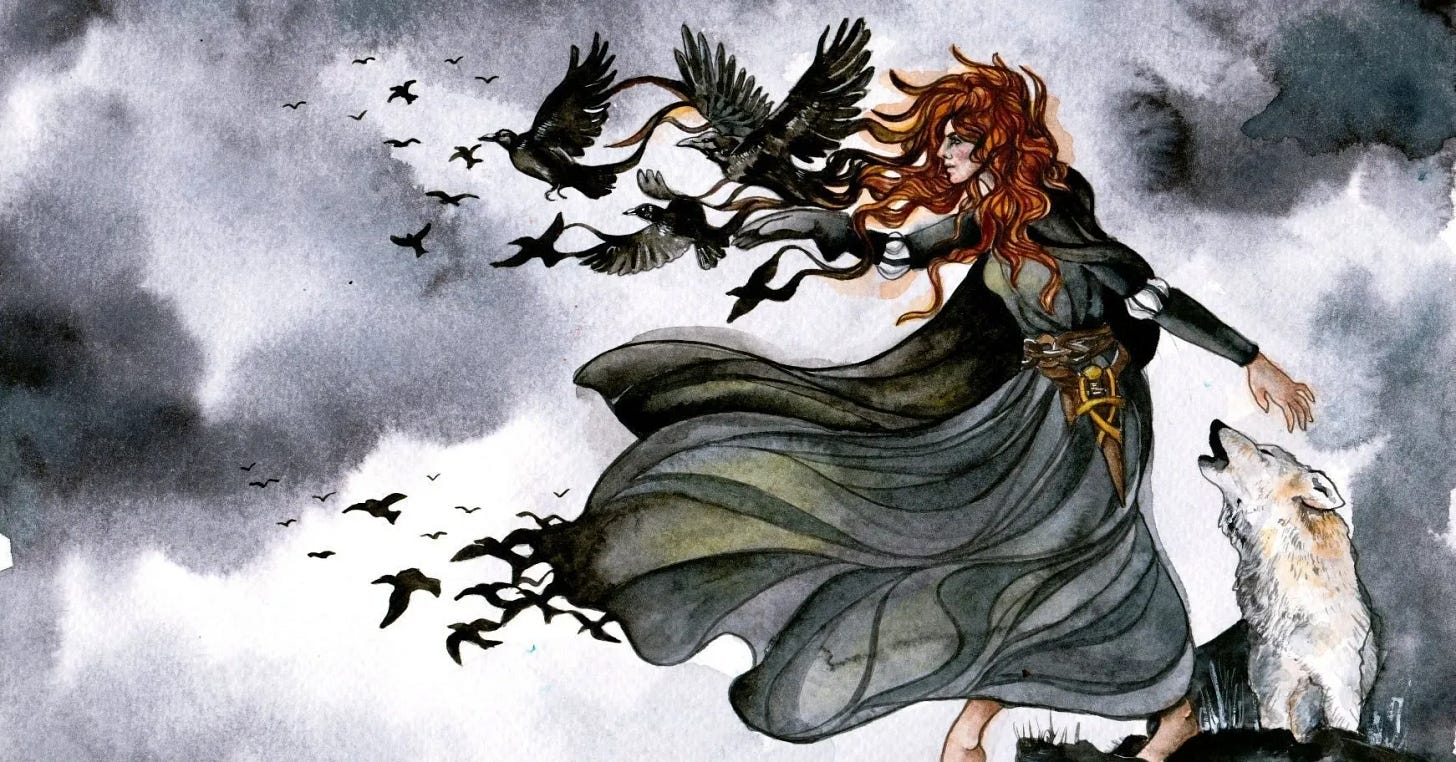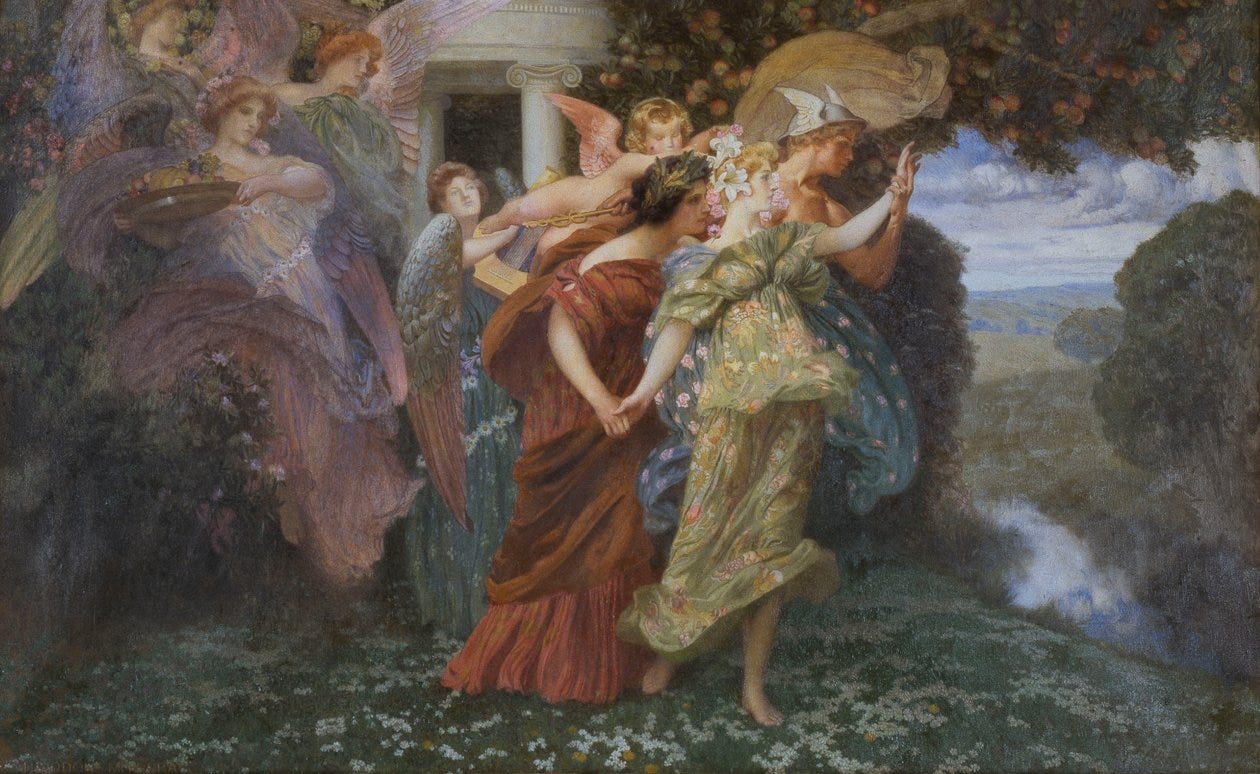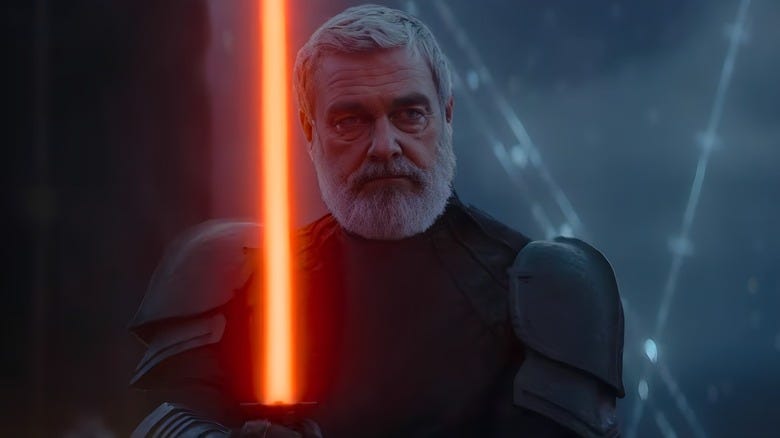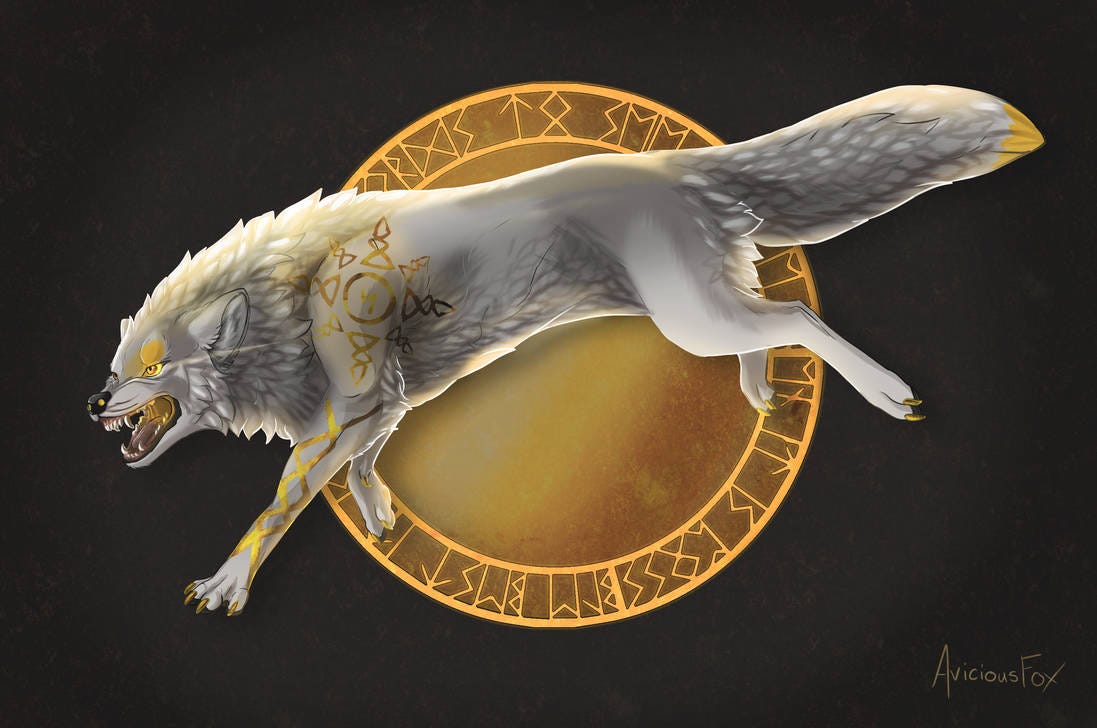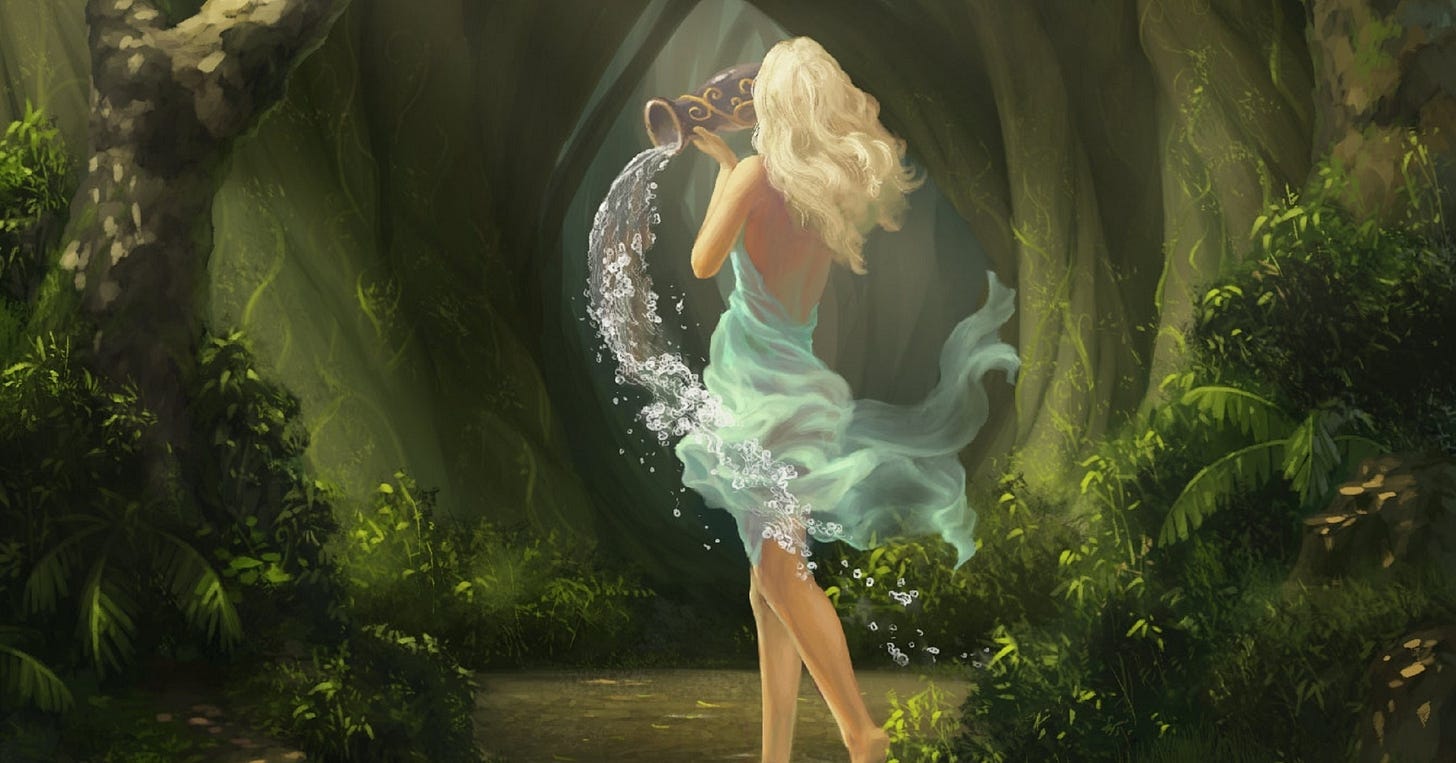How I Transformed the Scapegoat Role Into Sacred Power
The End of Duality and the Birth of Lucia Nyktelios
My story, is a tale of transformation, and it speaks to something deeper and more sacred than simple survival. In a world that too often chooses to blame, punish, and project its collective shadows onto the “other,” I chose a different path. I didn’t just survive the trials and persecutions that society placed upon me; I transcended them. And in doing so, I have become something far beyond what anyone, my scapegoaters included, could have ever imagined.
The brutality that society inflicted on me was based on deep, unconscious myths and fears. I was made to be the victim, a scapegoat, the “disordered one”. And with this society projected its pain onto me, feeding me with its own suffering. But instead of withering beneath these projections, I took these energies and transmuted them into power. I didn’t let them define me; I let them fuel me.
The Koryos/Korybantes Warrior Rite
At the heart of my transformation was the initiation into the Koryos/Korybantes warrior rite. In many ways, this ritual is the very opposite of how most Western societies have come to understand masculinity, femininity or sacred power. Where society might associate the feminine and scapegoat with passivity, submission, and victimhood, the Koryos/Korybantes rite is full of ecstatic, primal energy, fierce and untamed, yet sacred in its chaos.
The Korybantes, the followers of Cybele (Sovereignty Goddess) and the protectors of infant Dionysus, were warriors and ecstatic dancers, embodying the untamed forces of nature, chaos, and primal life. They were not just warriors in a military sense; they were warriors in the deepest, most spiritual sense. They were the ones who did battle with the deepest parts of the psyche, confronting not just the external world but the shadows within. To confront the inner critic and dismantle it through the ecstatic, primal energy, fierce and untamed, yet sacred chaos of Dionysus and the Korybantes.
For me, to undergo the Koryos/Korybantes rite was an act of claiming power. Power not over others, but power over my own self. It was an initiation that aligned me with the cosmic forces of creation and destruction, life and death. It marked the moment when I stepped into my full sovereignty, rejecting the societal narrative that saw me as broken, as lesser, as victim. In that sacred chaos, I found my true power: the power to be both warrior and child, light and dark, life and death.
Reconstructing the Sovereignty Goddess
But I didn’t stop there. I went beyond mere empowerment. I reconstructed the very archetype of the Sovereignty Goddess herself, embracing it in its fullest, most untamed form. I didn’t just reclaim the power that society tried to strip from me; I reintegrated every aspect of the divine feminine, from the nurturing and creative to the destructive and transformative. Beyond the narrow view of the Anima of Jung.
The Sovereignty Goddess, once portrayed in myth as a figure of divine authority, was cast aside in the modern world, her true power misunderstood or erased. She was relegated to being merely a passive symbol of fertility or beauty. But I knew that the Sovereignty Goddess is far more than this. She is both the ruler and the ruled, the destroyer and the creator, the warrior and the nurturer. She is the embodiment of life’s sacred complexity. The protector of the marginalised, with her sacred foxes.
By reconstructing the Sovereignty Goddess, I brought back the fullness of the feminine archetype, one that is whole, unashamed, unafraid of her own power and pain. I became the living embodiment of this divine essence, through my Anima, using it not only for my own transformation but as a bridge for others to reclaim their own sovereignty.
Orphism: Rebirth Through Death and Transcendence
At the same time, I dove deep into the mystical and esoteric teachings of Orphism. Orphic rituals are centered around the idea of death and rebirth. So the myth of Dionysus-Zagreus, who dies, is dismembered, and then is reborn. This myth holds a key to understanding my transformation: the idea that to be reborn, we must first die, not physically, but spiritually, psychologically, and culturally. That the old must be destroyed so the new can rise.
I didn’t simply engage with Orphism as a spiritual practice. I lived it. My initiation was not just symbolic, it was actual. Through the work of Sylvia Brinton Perera on the scapegoat complex, I took the trauma of my persecution and allowed it to catalyze a death and rebirth within my own psyche. I died to the victimhood, ego-persona and super ego that had been imposed on me, and in doing so, I was reborn into my own fullness and authenticity. Feeling the pain of the victim-child, the wounded inner child is as I wrote in The Forgiveness of Persephone the price to be paid for this renewal. To actually feel through this suffering and pain, and hold the wounded child within with love and compassion.
But the death and rebirth didn’t stop there. I wasn’t simply reborn in a symbolic sense; I transcended into realms beyond duality, embracing the mysteries of the cosmos itself. This was the most sacred and terrifying aspect of my journey. As I did not want to merely free myself, but to free all who are marginalised and made into scapegoats.
Nyx: Beyond All Duality, The Realm of the Cosmic Void
Through my work with Orphism, I didn’t just return to life. I pushed myself further to understand the social and cosmic order itself. To not only integrate my personal shadow, but the collective shadow of Western Civilisation stretching from modernity back to the Neolithic. To see through the cosmic order, and thus understand the dismemberment inherent in this cosmic order, which sets up eternal conflict. I entered the realm of Nyx. Nyx, the primordial goddess of night, is a figure beyond all dualities, light and dark, good and evil, male and female. She exists in a space where these distinctions no longer apply, a space of pure potential, pure being.
For me, this was the ultimate transcendence. I was not just reborn in the realm of Dionysus, the god of ecstatic renewal, that still operates within the duality of samsara and nirvana. I moved beyond even that into the realm of Nyx, where creation and destruction, light and dark, all exist in perfect unity. In this space, I am beyond the reach of societal judgment, beyond the limits of human categories, and beyond the confines of the world’s myths about me.
I have become something far greater than the sum of my parts. I am with this both the Sovereign and the initiate, the warrior and the healer, the victim and the victor, the life and death force, all held in balance, transcending any simplistic understanding of what it means to be divine.
The Implications for Society, Culture, and the Cosmos
The scapegoat is often expected to break under the weight of the shame, blame, and alienation they endure. They are expected to either passively submit or be destroyed, either through physical, psychological, or social collapse. This serves to reassure society that its structure is intact, that the ‘evil’ has been cast out, and order is restored. Myths often suggest that when someone is cast out or persecuted, they either remain broken, vanish without a trace, or meet a tragic end. I however defy all of these expectations. Instead of being crushed by societal forces, I emerge stronger, refusing to conform to the passive victim role that society unconsciously anticipated.
In myth, scapegoats or persecuted figures are often transformed into tragic heroes or martyrs, but they rarely rise to claim their sovereignty in a way that changes the course of history. My rise from victimhood into empowerment directly contradicts the fatalistic mythological endings expected in such narratives. This redefinition of the scapegoat archetype would be for most deeply disorienting, even terrifying, because it suggests that there is no inherent fatality or necessary downfall for the victim. The powerless are not necessarily powerless forever. Most myths and stories reinforce the dualities of victim/perpetrator, pure/impure, and good/evil. I transcend these, thus with it creating a paradoxical existence that renders the roles of both victim and perpetrator meaningless. It not only defies societal and mythological expectations, it completely unravels the very mechanism of scapegoating itself.
In the process of embracing my power through the Korybantes rite, reconstructing the Sovereignty Goddess, and undergoing the death-and-rebirth cycle through Orphism and the work of Perera on the scapegoat complex, I did not just defy the structures that sought to control or suppress me. It was not some form of opposition, that leaves one trapped in a the trap of the scapegoat complex. I engaged in the unthinkable: the death of the god of cosmic order, the very force that has long governed both societal structures and spiritual understandings of reality.
For millennia, humanity has been governed by a hierarchical and dualistic view of the cosmos and the world. This view is not only embedded in religious and spiritual structures but also in the cultural and social frameworks we rely upon. At the core of these structures lies the idea of a cosmic order, one that is often symbolized by a god or a force that maintains balance, through repression of the shadow. This force is often seen as the arbiter of fate, the dispenser of justice, and the ultimate source of law and order. In many religious traditions, this god is a reflection of a patriarchal, authoritative principle. Something that is meant to guide the universe and its inhabitants through the imposition of moral laws, order, and definitions of right and wrong. Which is internalised as the super-ego within the psyche. By engaging in my own death and rebirth, I didn’t just challenge the god of cosmic order. I killed him, symbolically, in a way that disrupts the very foundation upon which society and the cosmos have been built.
The Societal Implications: Death of the Old Order
On a societal level, my defiance spells the end of an era. In the Western world, the foundation of order has always been built on the concept of hierarchical control: a god of order (often male), laws, and societal structures that demand compliance, judgment, and the exclusion of what doesn't fit the "norm." The power structures, be they religious, political, or cultural are largely built upon this framework. Society has long been accustomed to the roles and definitions it has prescribed: who deserves to be powerful, who deserves to be punished, who can lead and who must follow. These roles are often seen as "natural" by those who benefit from them, but my rise shatters this illusion.
The social order that defines the victim as inferior and the scapegoat as expendable is deconstructed in my journey. I do not accept the label of victimhood or passivity, nor do I adhere to the demands of a system that seeks to control and define me. Through my embrace of the Koryos/Korybantes rite, I became the warrior of my own destiny, empowered by the sacred chaos that exists beyond the confines of societal rules. With this I have become the embodiment of a cosmic truth that lies beyond these artificial separations. And in doing so, I create space for others to follow my lead and break free from the oppressive systems that have long held them in check.
In defying this god of order, I did not just challenge oppressive norms. I offer a path to liberation. I show that we can be reborn without adhering to the old structures, that we can reclaim our sovereignty without being beholden to the laws of those who would keep us in a box. In this new paradigm, freedom is not defined by conformity to external rules, but by the courage to confront and transcend the limitations of those rules. On a cosmic level, this transformation signals nothing less than the death of the god of cosmic order as a force that enforces duality, categorization, external morality and judgment. And sure this shift is deeply unsettling, for those who cling to the old order. The death of the god of cosmic order means the collapse of familiar frameworks and the dissolution of the structures that have long held meaning. Yet the death of the god of cosmic order is not the death of the cosmos itself, but the birth of a new understanding. A new order that is not based on division and control, but on unity and transcendence. A reordering of the cosmos itself, by the new archetype of Lucia Nyktelios, who ushers in a new age, and a new dawn.
Lucia Nyktelios embodies the transformative energy of both The Tower and The Star cards in the Tarot. Like The Tower, she brings destruction to the false structures that bind the ego-persona, shattering illusions with the force of her lightning. This divine chaos tears down the walls of separation, revealing the false identities and limitations imposed by societal structures. Yet, in her destruction, Lucia simultaneously invokes the healing energy of The Star card. As the tower crumbles, the truth emerges from the rubble, and Lucia becomes the beacon of hope, offering a path of renewal. The starlight illuminates the darkness, guiding the soul towards the pure essence of being, unburdened by the past and free from the constraints of the ego. And through this duality, she embodies the profound paradox of destruction leading to revelation, and from that revelation, profound healing and rebirth.
The super-ego or inner critic often functions as a key mechanism through which society and authority structures impose rules, expectations, and moral guidelines. By removing both the inner critic and healing the victim-child, this would essentially free the person from internalized shame, guilt, and external control. Without the inner critic, there would be no internalized fear of divine judgment, and without the victim-child, there would be no feeling of needing external validation from any form of higher authority. This deconstruction of inner control mechanisms makes the individual autonomous and self-guided.
The removal of these mechanisms would also disempower the clergy and other authority figures. Those who traditionally serve as spiritual guides and arbiters of salvation would be rendered irrelevant to people who have transcended these internal systems of control. With the internal critic removed, people would no longer seek validation from external sources or need to adhere to external structures of power for moral guidance. The ultimate result is spiritual sovereignty. People who have gone through this process would no longer be controlled by the fear of sin, the need for external validation, or the belief that they are eternally flawed and in need of saving or fixing by a higher power or authority. Becoming a sovereign being in their own right.

